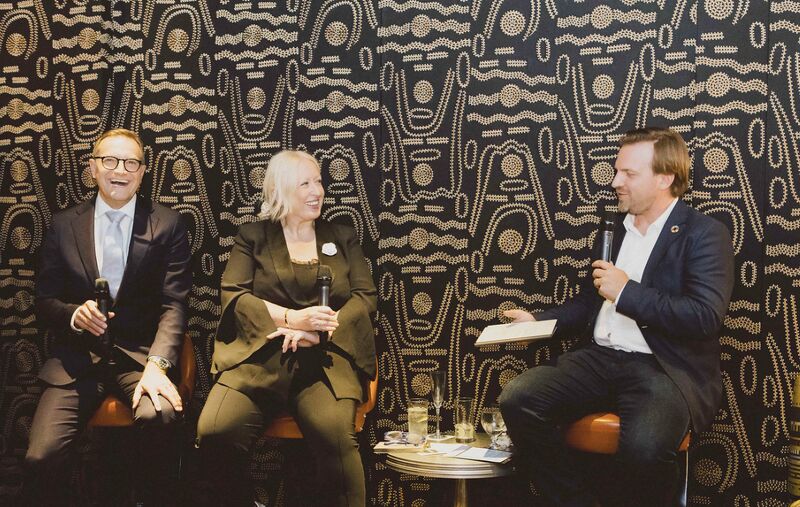
Trust, change and resilience in a challenging media environment were front of mind for many delegates at a recent Fortune event in London. Under the banner The Story Ahead, the showcase sought to unite the key voices shaping the media industry, authentic journalism and the brand stories of tomorrow. It welcomed input from Fortune 500 leaders and the innovators rewriting the rules in digital transformation, tech and beyond.
Top of the agenda was how to build trust in a world increasingly distrustful of institutions of any stripe.
Building brands which inspire trust
Here Christophe Woerman, Chief Marketing Officer of the Corporate Bank at Deutsche Bank, shone, taking a candid look at how an organisation that has suffered its fair share of scandals in recent years worked to recover its reputation.
“Banking is all about trust,” he explained, “and we like to say this trust ‘comes on foot, but rides away on a horse’. It only takes a handful of people to bring an organisation of 100,000 people to the brink of collapse. So, how do you instil trust? It takes more than welcoming people to an organisation with a brochure.
“We must redefine our purpose; this is more than a woolly, blurry text. We put together tenets that say clearly ‘this is why we are in business’ and these act as an orientating north star for the business. More importantly, a company needs a vision – where do we want to be in ten years’ time? I know where we are going, and my strategy now allows us to get there.”
Woerman also explored the concept of a ‘cultural handshake,’ an easily digestible, non-negotiable posture Deutsche Bank has adopted, applicable to all employees.
He added: “With this in place, we ask, with which behaviour? We cannot tell our people ‘this is your culture,’ we have to create a cultural aspiration, which is condensed into a brand promise – all of which fits onto one page.
“This is the ‘cultural handshake’ we refer to at Deutsche Bank, one we can share with every new joiner and member of existing staff. We can say, ‘if you do not like it, ring the bell, stop off the bus and you are out’. There is no magic; we must define our handshake, activate it first internally. Make sure that everybody understands their role and are able to act as brand ambassadors.”
Show up, every time
His thoughts were echoed by Sarah Thomas, Executive Vice President & Group Chief Marketing Officer, Capgemini UK, who argued brands must be seen to demonstrate their values, time and again.
“For me, brands which thrive are those which show up consistently, are transparent, clear about who they are – they take guiding principles from a brand purpose and values,” she explained to Fortune attendees.
“When it comes to sponsorships, we only consider those which anchor back to our brand promise, and those which have elements of both sustainability and inclusivity. We have a long heritage with rugby, and are sponsors of the Rugby World Cup, both men and women, while we also have a large engineering practice, which has led us to sponsor the America’s Cup.”
Imagining a different future
Heritage is no barrier to change, argued Benjamin Lickfett, Global Vice President, Breakthrough Innovation, Digital & Ventures, at drinks giant Diageo. While we must respect the past, this does not mean we cannot explore new ways of doing things.
“We are lucky to have brands with hundreds of years of heritage within our company and while the products themselves do not change, the way they are discovered does. The way people socialise and talk about our products is changing,” he said. “We need to understand what data is available to us, what data we can use to deepen our insight. For example, in a category like whisky, we need barkeepers and consumers to tell our story on our behalf.”
Finally, Phil Tolliday, Global Head of Marketing Science, Solutions, WPP, said technology must not blind us to human stories.
He concluded: “We are overwhelmed with data, more than we can use. It can tell us a lot about preferences, but it is also important to capture the ‘why’ – the reasons behind the decisions we take. That combination of AI and human intelligence is really important in our ability to do that.”